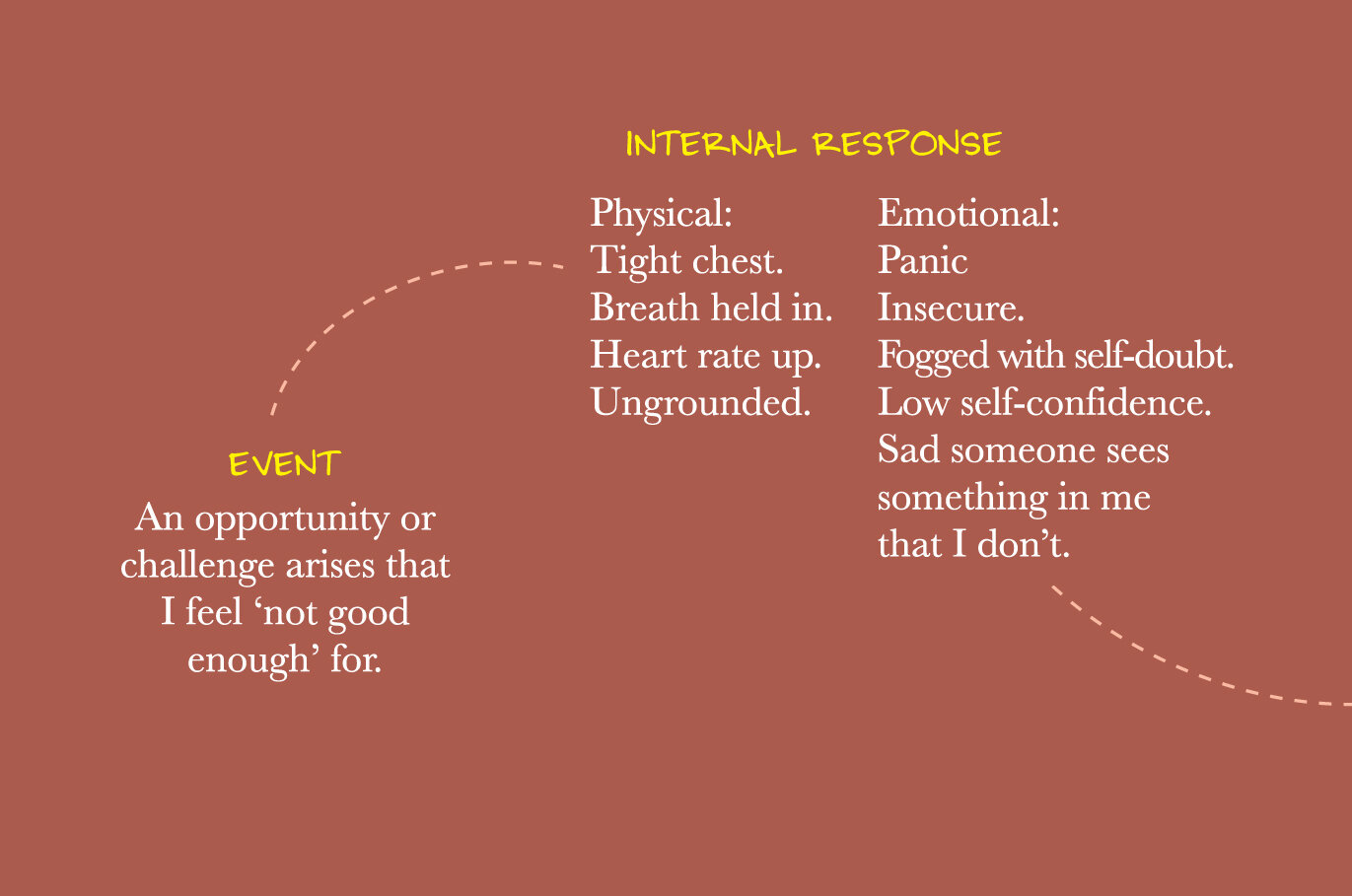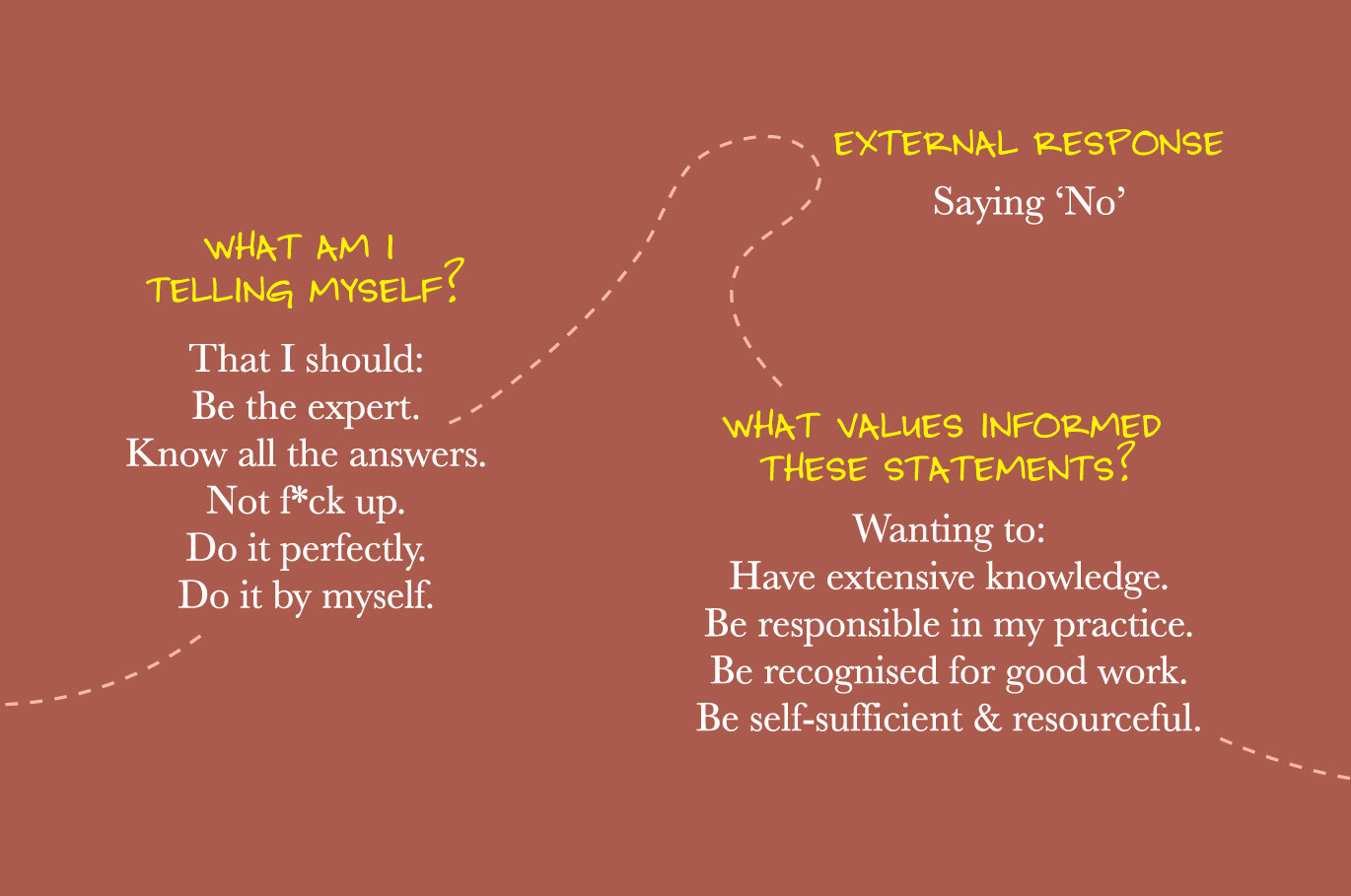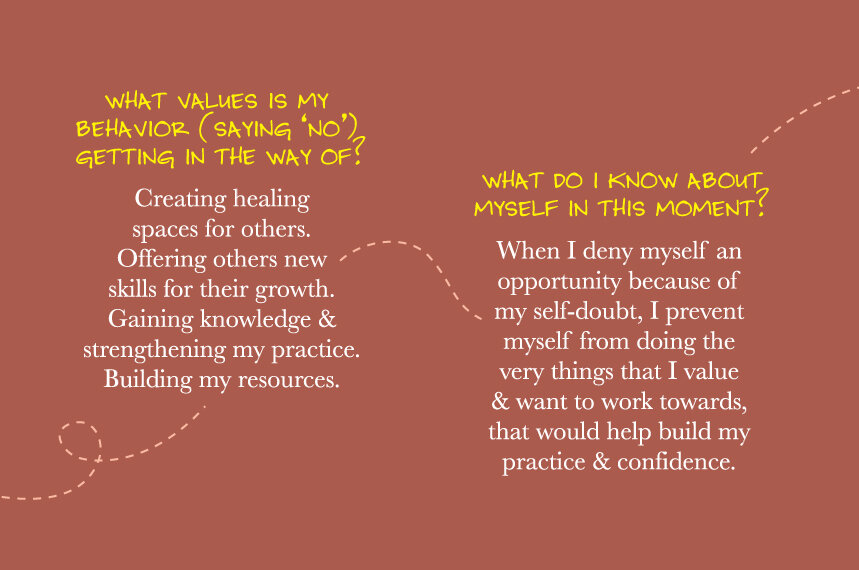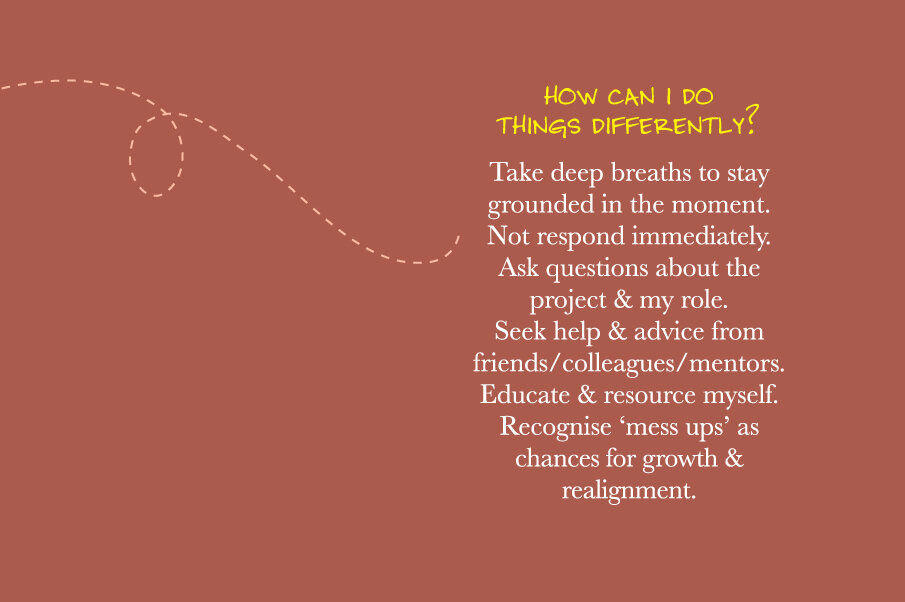A couple of years ago a colleague of mine proposed we host a series of workshops for mums with postnatal depression and asked if I would consider being the facilitator. This was such a tremendous opportunity, and it meant so much that my colleague recognised something in me that could contribute to this.
So, naturally – I said ‘NO’.
We all have that one story that gets in the way of us achieving our fullest selves, in our relationships, our careers, you name it. And if you don’t, well teach me your ways because I have lost many an opportunity to that one story.
It’s the relentless story about what I am, or am not capable of, that disrupts every cell in my body and impacts the choices I make in how I will proceed or more commonly say ‘No’ to an opportunity that arises.
Intensely aware of this habit to eject myself from situations where I perceive myself as ‘not good enough’, I wanted to know:
What happens between the moment an opportunity is proposed to me, and the moment this relentless story steals it from me?
So I mapped the moment to get an idea of what my process is, to see where I stumble, what the byproduct of this behaviour is and what I could do differently next time. This was initially a 2000+ word assignment with a more complex map! But here’s a simplified breakdown.
Here’s a closer look:
Do you have a story that gets in your way?




